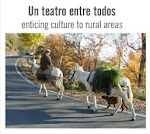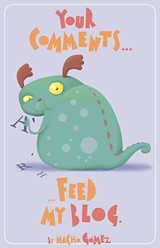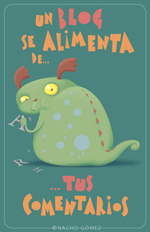Un “Warmer”
en inglés es una actividad corta que se usa para calentar motores al principio
de clase. Pero también se pueden utilizar para cambiar el ritmo de una
clase; para romper tensiones; para introducir un nuevo tema o para ‘situar’ a
los alumnos en un nuevo contexto y para apoyar de alguna manera a las actividades
principales de la clase. Estos son algunos de mis “warmers” preferidos (con
enlaces, si los he podido encontrar).
El juego de los nombres
Todo un clásico del
primer día de clase, este juego está genial para aprender los nombres de la
clase y para que todos se conozcan si es que el grupo es nuevo. Un alumno da un
paso adelante a la vez que tiene que decir su nombre y asumir una postura que refleja
de alguna manera su personalidad. Por ejemplo, Sara baila una jota mientras chilla
su nombre. Los demás tienen que copiar lo que ha hecho Sara antes de seguir con
el juego.
Una variación: Cuando le toca, cada
alumno tiene que decir su nombre y pensar en un adjetivo (o si prefieres, un
objeto) que empieza por la misma letra que su nombre y que le representa de
alguna manera ej. “Soy María y soy maravillosa”.
Otra variación: Se forma un circulo y se
lanza una pelota a alguien a la vez que se dice su nombre. Al cogerlo, ellos
hacen lo mismo. Poco a poco se introducen cada vez más pelotas… ¡y empieza la
locura!
El Sandwich más grande del mundo:
 Un juego de memoria para
aprender los nombres. Los alumnos están sentados en círculo. El primero tiene
que decir: “Soy Juan y el sándwich más grande del mundo tiene… queso!”. El
siguiente tiene que decir su nombre, el ingrediente de Juan y luego elegir su
propio ingrediente: “Soy Elisa y el sándwich más grande del mundo tiene queso….
Y regaliz!”. Si quieres, puedes pedir al resto de la clase que digan la lista
de ingredientes cada vez y al final del juego – como no – habrá que tomar un
gran mordisco.
Un juego de memoria para
aprender los nombres. Los alumnos están sentados en círculo. El primero tiene
que decir: “Soy Juan y el sándwich más grande del mundo tiene… queso!”. El
siguiente tiene que decir su nombre, el ingrediente de Juan y luego elegir su
propio ingrediente: “Soy Elisa y el sándwich más grande del mundo tiene queso….
Y regaliz!”. Si quieres, puedes pedir al resto de la clase que digan la lista
de ingredientes cada vez y al final del juego – como no – habrá que tomar un
gran mordisco.
El escultor… y su escultura
Los
alumnos están en parejas. Uno hace de escultor y el otro, de su escultura. Sin
tocar a su compañero, el escultor le ‘moldea’ para formar una escultura. Una
vez completadas las obras de arte, cambian de papeles para dar a la escultura
la posibilidad de ‘vengarse’ de las maniobras de su compañero. Como ejercicio,
favorece el trabajo en equipo/pareja y el control de movimiento
Actividades con Globos:
 |
| happyblogs.wordpress.com |
- · Inflar un globo por alumno y pedirle al grupo que lo mantenga en el aire. Esta actividad favorece que la clase se mueva y le obliga a coordinarse. Una vez pillado el truco, se puede ir soltando cada vez más globos o introducir una nueva ‘regla’ ej. no se permite usar las manos. También se puede pedir al grupo clasificar los globos por colores sin dejar caer ninguno.
- · Los alumnos se colocan en círculo. El profesor lanza un globo al aire a la vez que dice el nombre de alguien. Esa persona tiene que coger al globo antes de que toque el suelo. Si lo consigue, lanza de nuevo el globo y dice el nombre de otro.
- · Como alternativa, en vez de coger el globo, lo tienen que mantener en el aire. Además de decir el nombre de alguien, se dice la parte del cuerpo que se tiene que utilizar para mantener el globo en el aire hasta que dice el nombre (y parte del cuerpo) del siguiente alumno.
- · Los alumnos forman equipos. Cada equipo se coloca en círculo cerrado e intentan mantener el globo en el aire utilizando solo el aliento (¡y sin marearse, claro!).
 |
| visualphotos.com |
- · Los alumnos tratan de equilibrar un globo sobre la punta de un dedo a ver quien dura más tiempo. No está permitido ni sujetar el globo ni tocar al globo de otro y el dedo siempre tiene que estar en contacto directo con el globo. Un juego que favorece la concentración y la coordinación.
Bueno, la
verdad es que la lista de actividades de calentamiento chulas (“warmers”) es
larga. Así que por hoy lo dejo. Mañana más….









